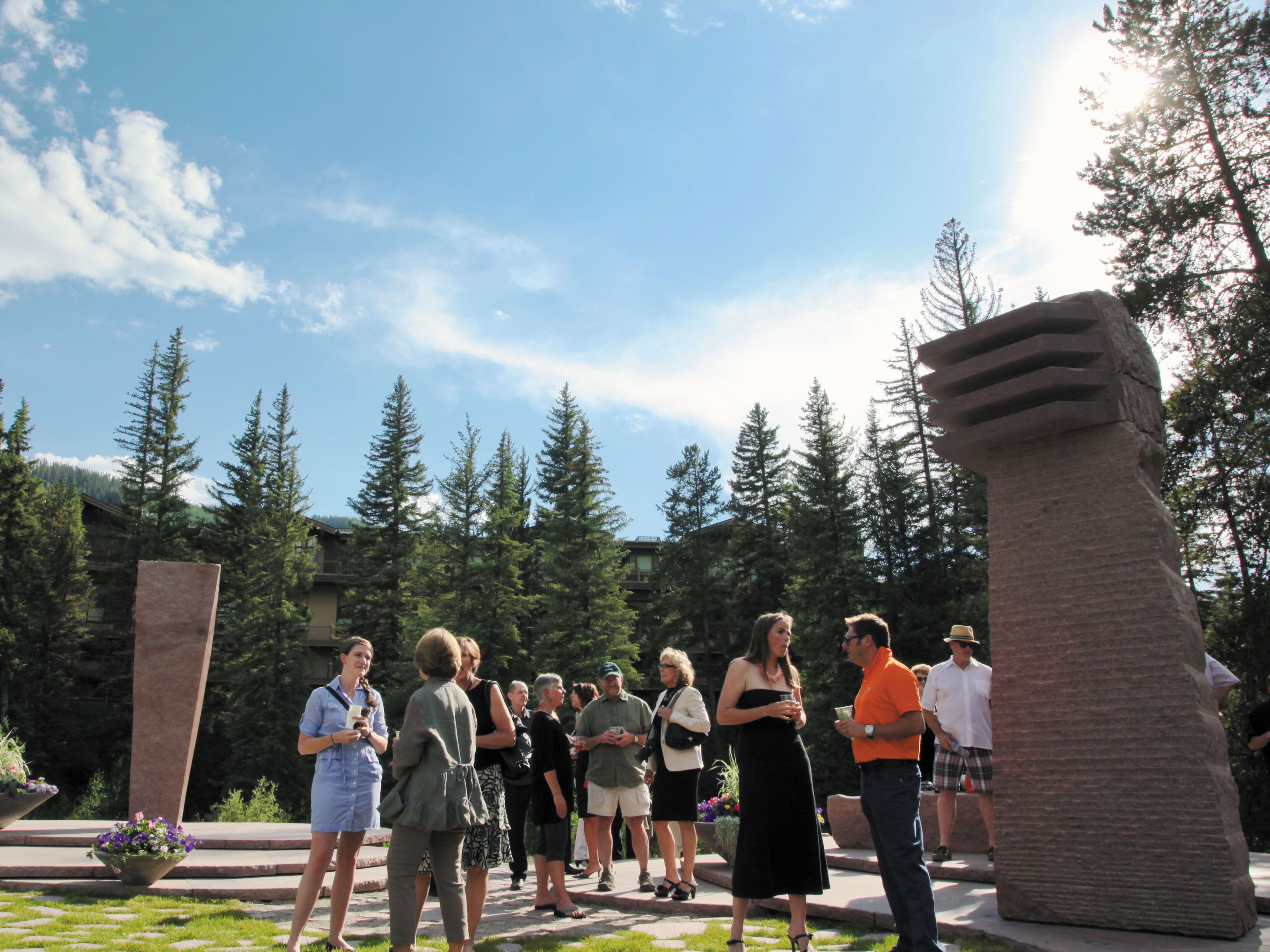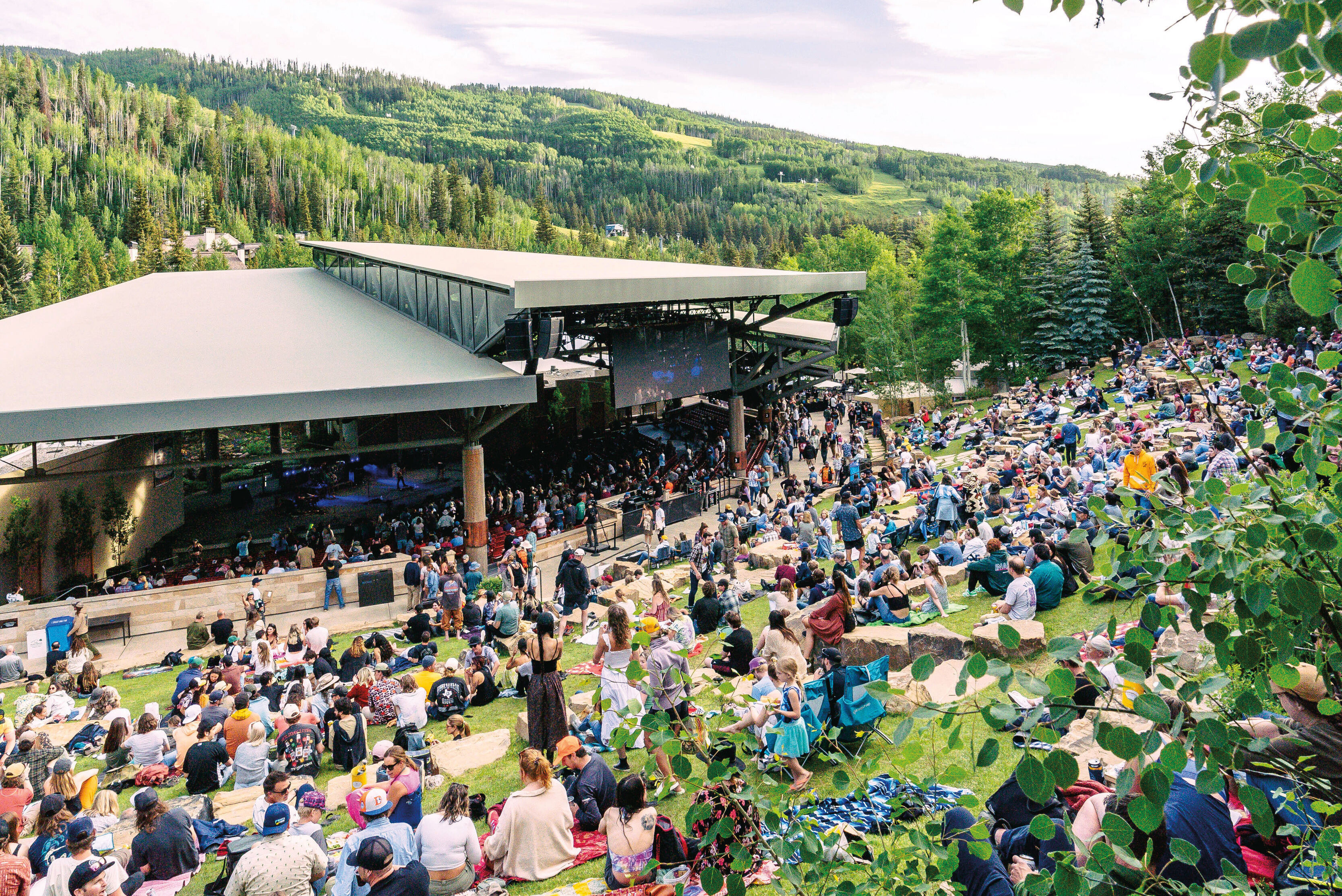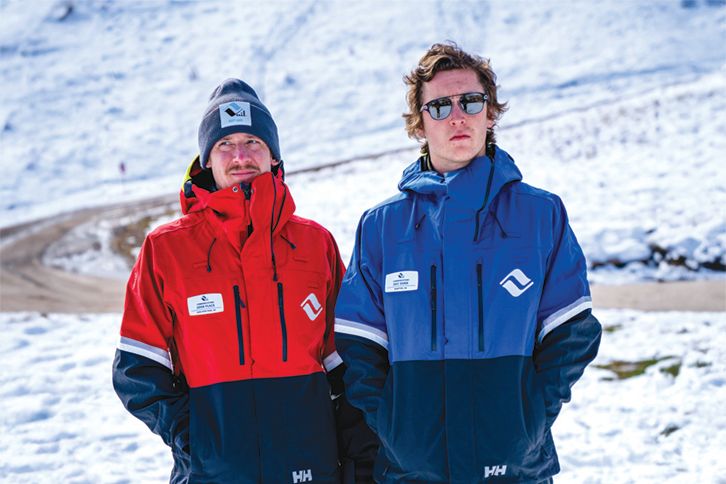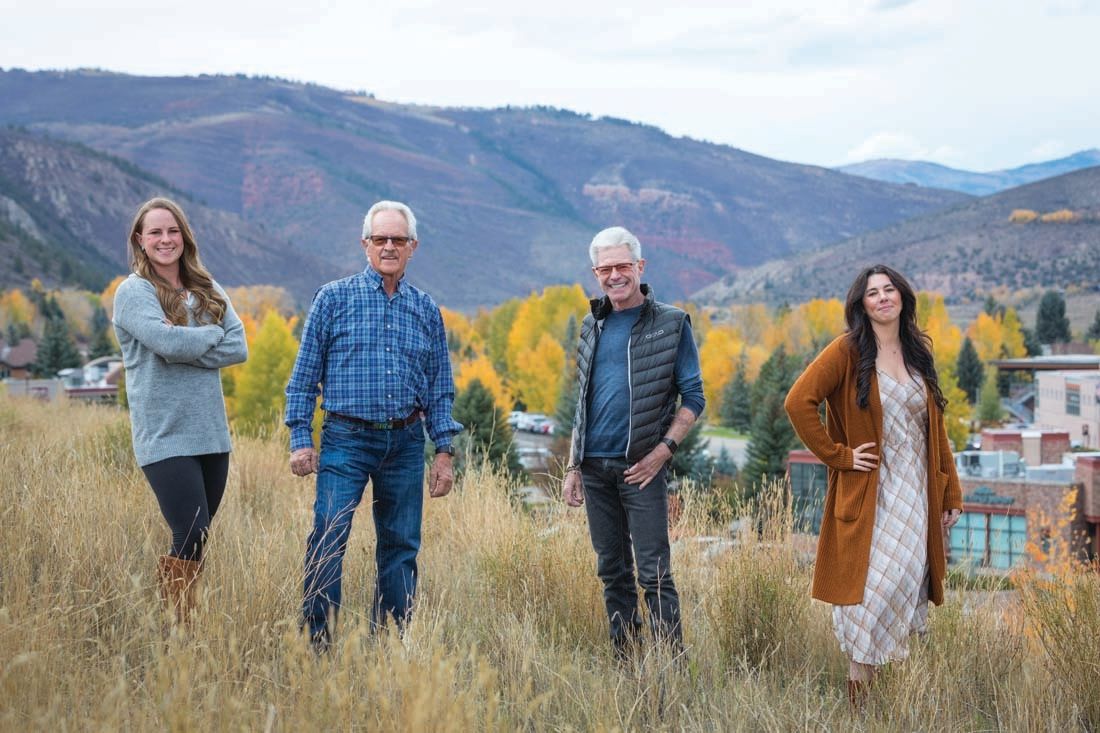
How Long Will Edwards Have to Wait for Affordable Housing?
A little more than three years ago, Makenzie Mueller was working in Salt Lake City for the gear manufacturer Petzl when her father, Rick Mueller, had a health scare. So she took a job with the local development firm he cofounded, Remonov + Co. in Edwards, and planned to come home. Remonov had recently begun to explore building a co-living hub on an empty plot of land it owned behind Edwards Corner, and Makenzie’s first assignment, while packing for her return to the Vail Valley, was to research successful co-living communities (apartment complexes in high-rent districts that provide affordable, fully furnished rooms with shared living spaces) in London, San Francisco, and New York City.
But first she had to solve a vexing, and ironic, problem of her own: she couldn’t find a place to live here—even with financial means and local contacts. So she moved in with her boyfriend and lived in Boulder for several months before she finally found an apartment in Edwards she could afford. Her experience amplified how urgent and acute the local housing need had become.
“It became a really personal story for me,” says Mueller, who graduated from Battle Mountain High School in 2012 as valedictorian and student body president. “I only have to work one job, but my friends who work three jobs and can’t find a place? Who are bartending all night and then have to wake up in the morning and go to work in an office?” She sighs. “It makes me really sad, but also really lonely. Everyone’s constantly hustling.”
Remonov’s co-living concept took shape as the Mtn Hive, a proposed high-density home for hundreds of the valley’s worker bees. The majority of the planned 188 rental units would be 180- to 300-square-foot studios with some micro two- and three-bedroom apartments—most of them deed-restricted for full-time locals. Each floor would include shared amenities like commercial-grade kitchens and communal living areas. “It’s supposed to help with overcrowding, get people out of roommate situations,” says Mueller, now 28 and Remonov’s vice president, who runs the company with Jessica Hernreich, a childhood friend and daughter of the firm’s co-founder. The complex would also include a rooftop bar, a library, a gym, gear sharing, car sharing, and weekly programming from beer tastings to networking workshops. “The idea is to give everyone more bang for their buck.”
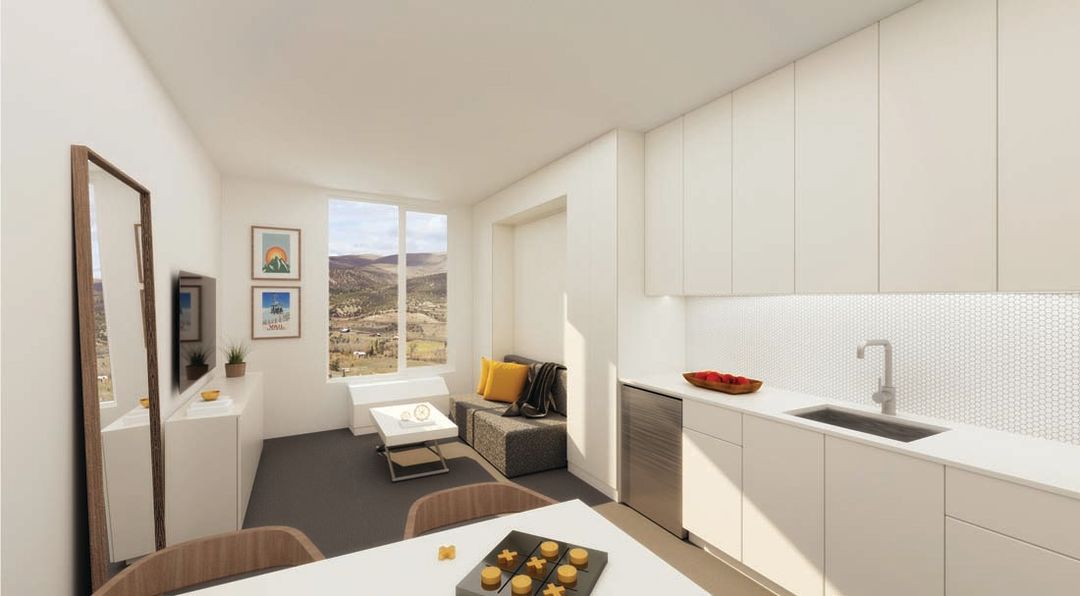
A rendering of one of Mtn Hive's 188 apartments, small units with shared living spaces that would be deed-restricted to local workers. Photo courtesy Architecture Research Office and Move Matter Architects
Image: Courtesy Remonov
In September 2019, Remonov submitted its application to Eagle County, optimism attached, despite a substantial hurdle: the lot the company wanted to develop was not zoned for high-density housing. Instead of being seen as a solution, Remonov’s proposal has come to represent the polarizing narratives surrounding Eagle County’s housing crisis. Mueller says she watched parents of her high-school friends become enraged at the prospect of Mtn Hive moving into their neighborhood. “I had someone spit on me at a community meeting. And people just yelling,” she says. Opponents argue the project is too big for Edwards and would set a dangerous precedent for future development.
According to the most recent housing needs assessment, released in 2018, Eagle County is expected to be 5,900 units short by 2025. Though Mtn Hive could close that gap, it also isn’t perfect. Detractors point out that the rent Remonov plans to charge for minuscule spaces (Rick Mueller says the studios would start around $1,400 per month, a price he says is necessary to sustain the project) can hardly be defined as affordable, much less livable, and at four stories tall, the complex would be out of scale with single-family homes in neighboring Homestead and much of Edwards, a community that is already the most populated in the valley. So why the push to build it?
Because almost every business is struggling to find and keep employees, given the challenge of finding housing in a red-hot pandemic real estate market—at press time, there were only 250 active listings in all of Eagle County, with a median price of $1.8 million. Some of the valley’s premier restaurants—Vin 48, La Bottega, Juniper—closed or scaled back their hours this summer due to staff shortages. Vail Valley Animal Hospital discontinued its emergency vet service on weekends. The local workforce is thinning. Yet tourists, and professionals recently untethered from urban offices now that working from home is the new normal, keep coming and staying, which often makes it more lucrative for property owners to rent or sell to them instead of to local wage earners.
That wasn’t a problem when Rick Mueller discovered Vail in 1967. He and four college friends would drive up from Colorado Springs and sleep in a Ford Pinto next to Pepi’s. “You’d have to wake up and turn the car on to get heat,” he recalls. “Every half hour it was the next guy’s turn.” Mueller moved here in 1987 and got into real estate. In the early ’90s, he and fellow local Bobby Hernreich, a financier who has owned franchises in the NBA, Major League Baseball, and the English Premier League, became friends while training for the Leadville 100 mountain bike race. As business partners in 1994, they founded Remonov (a tongue-in-cheek truncation of “Recreational Monsters of Vail”) and bought 35 acres at the intersection of U.S. Highway 6 and Edwards Access Road, what would become the commercial heart of Vail and Beaver Creek’s booming unincorporated bedroom community.
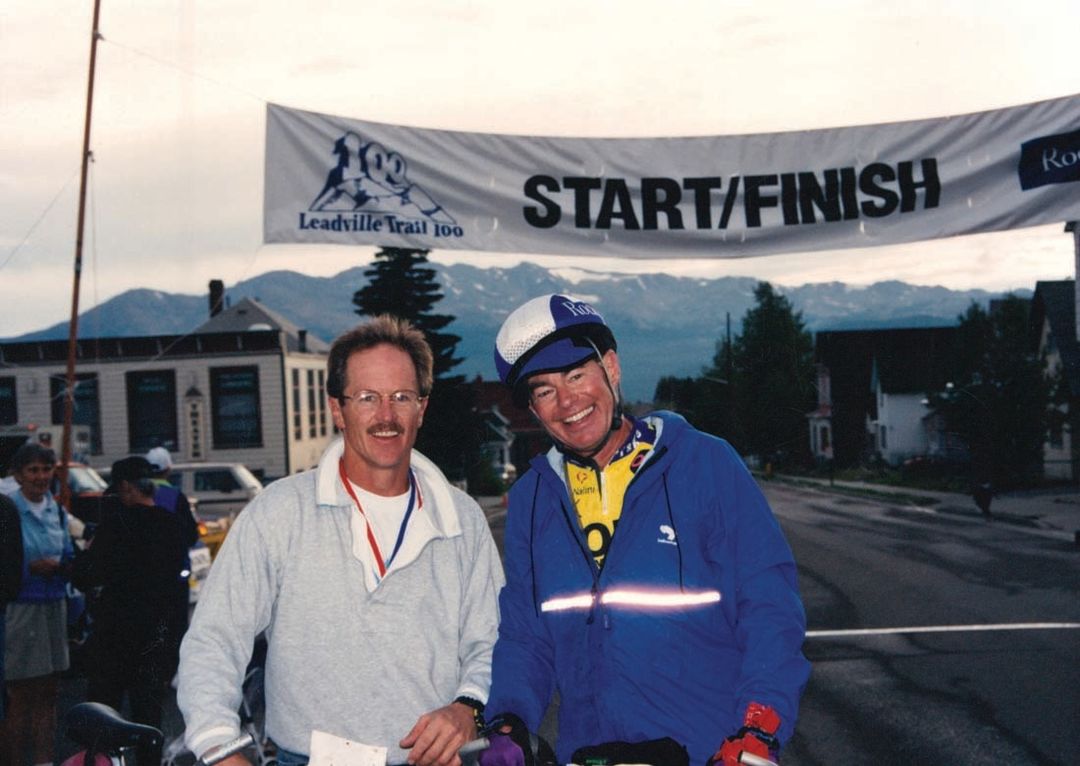
After meeting at a Leadville 100 race in the 1990s, Rick Mueller and Bobby Hernreich founded Remonov, short for “Recreational Monsters of Vail.”
Image: Courtesy Remonov
Most of that land they developed into Edwards’ retail core—Edwards Corner, Edwards Commercial Park, and Edwards Village Center. But the steep, 4.27-acre rectangle of fill dirt known as Tract T was left fallow. The lot had originally been platted as a commercial site in 1981; 15 years later, another plat note restricted its uses to “pedestrian, bicycle, and vehicular access, drainage structures, landscaping, utilities, trails, recreation facilities and open space.” In other words: not housing.
Remonov submitted applications to develop Tract T four times between 2005 and 2009, including one for a luxury condo development, but locals pushed back, the proposals never went far, and then the market crashed. For the past two decades, the developers paid just $194 to $371 a year in taxes on Tract T. It is zoned commercial general, but the restrictive plat note and limits imposed by the Edwards Area Community Plan’s Future Land Use Map make it next to worthless—unless Remonov can convince the county commissioners to remove the restrictions. “That property does not need to sit in the middle of the core area as open space that’s not open to the public,” Rick Mueller says.
After its initial submission, Remonov worked with county staff to address concerns, most notably shrinking the Hive from 263 units to 188. Opponents submitted hundreds of comments against it, usually citing the plat notes, high rent, and decades of tax breaks. Chris Neuswanger, a local mortgage broker who has lived in Edwards since 1995, started a website called stopthehive.com. “I believe the integrity of Eagle County’s land-use system is in the crosshairs here,” he says. “To change your plat notes would really be a corruption, I guess I would call it, of what has come to be a significant part of the process. Otherwise, you’re just allowing developers to bank land for decades, not pay much taxes on it, then come back and say, ‘OK, I want the right to develop it now.’”
Rick Mueller, who cofounded Habitat for Humanity Vail Valley, claims much of the opposition is due to nimbyism (Not In My Back Yard). “Why doesn’t the next person who comes along have the ability to enjoy the things that our community provides?” Mueller says. “Is Homestead willing to go back and pay all the taxes for its land that used to be ranchland? What is the difference between that and this? What we’re dealing with here is what’s the best use for the county.”
The Vail Valley Partnership’s board voted to support the project, arguing that it supports middle-income earners who are being pushed out. CEO Chris Romer calls the Hive “an innovative housing solution aimed at one of the hardest demographics for Eagle County to retain: young professionals.” Nevertheless, in December 2020, county staff recommended that the planning commission deny all of Remonov’s requests, sending the Hive back to the drawing board. Perhaps signaling one path forward, in late October the county approved a downscaled plan for Edwards RiverPark, a sprawling neighborhood proposed for a 55-acre former gravel pit just west of Edwards Corner. Responding to commissioner concerns, developers reduced the number of residential units (to 440) and building heights (to 70 feet) while increasing the number of workforce housing units deed-restricted for locals (to 270), and sweetening the pot with a 1 percent real estate transfer fee on all free-market units that would be earmarked for the county’s affordable housing fund.

An aerial view of Edwards Corner (foreground) with a rendering of Mtn Hive, a proposed 188-unit apartment complex developer Remonov + Co. proposes to build to address a critical shortage of workforce housing in the valley that is hurting the local economy.
Image: Courtesy Remonov
Meanwhile, directly across the valley a few miles north and west of the Berry Creek drainage, another proposal moves forward. The owners of Berlaimont Estates, a 680-acre inholding surrounded by U.S. forestland, are trying to build 19 luxury homes on 35-acre lots. In September 2020, the U.S. Forest Service agreed to pave a dirt road to reach Berlaimont’s property, despite thousands of letters opposed.
It’s not like there’s no momentum to close the housing gap. In Vail, the November ballot included a half-cent sales tax that would generate about $4.3 million annually for housing. And over the summer, Eagle County transferred $5.4 million from its general fund to its housing fund to tackle the problem. But there is still no zoning specifically for workforce housing—nor a viable path to the number of units needed.
“Just last year, construction costs have gone up 30 percent,” Rick Mueller says, noting Remonov has already spent $2 million on the Hive. “Potentially this would not be considered by the planning commission for another year, so that’s going to make it five, six, seven years to get workforce housing approved? What are we going to be then, 10,000 homes short? We’ll be in a position where our community is going to fold.”
Remonov continues to meet with county staff, but other ski resorts are courting the firm to build housing elsewhere, too, Mueller says. “Three in-state, two in Utah, and one in California. They came to us.”
The question of what the Hive’s fate says about Eagle County’s future lingers. “If a local person who owns the ground can’t get it done, who’s going to come in and buy the ground at an inflated price and make those numbers work?” Mueller asks. “Our stigma is going to be: stay away from there. We’ll be in the same position in 20 years.”
As will those following in the footsteps of his daughter: children born and raised in this valley who go away to college and come home only to find that there’s nowhere left for them to live.


















